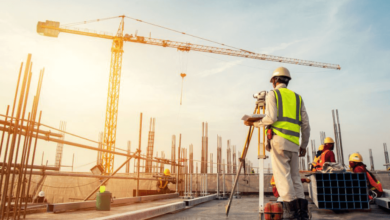self loading mixer: The Unseen Hero in Disaster Relief and Emergency Construction

When disaster strikes—be it an earthquake, flood, landslide, or war—one of the most urgent needs is the rapid reconstruction of essential infrastructure. Emergency shelters, medical camps, access roads, and sanitation systems need to be built quickly, often in remote and chaotic environments. In these critical situations, the Self Loading Mixer emerges as an unsung hero—delivering efficient, mobile concrete production right at the heart of crisis zones.
Unlike conventional concrete equipment, the self loading mixer combines loading, batching, mixing, transporting, and pouring capabilities into one compact unit. It’s a one-person-operated concrete plant on wheels, able to navigate harsh terrain and operate with minimal external resources. For relief organizations, military engineers, and governments, this machine offers a powerful way to rebuild communities swiftly and effectively.
In this article, we’ll explore how the self loading mixer supports humanitarian missions, strengthens rapid response strategies, and plays a vital role in emergency construction across the globe.
The Challenge of Concrete in Disaster Zones
- Construct temporary housing or shelters
- Stabilize damaged bridges and roads
- Build latrines and sanitation systems
- Lay foundations for mobile clinics and water tanks
- Restore damaged schools, hospitals, and infrastructure
But traditional concrete delivery methods are impractical in disaster-stricken regions. Damaged roads, fuel shortages, displaced workers, and security concerns make the use of centralized batching plants or concrete delivery trucks impossible.
See also: ev outdoor charging station: accelerating the electric vehicle revolution
This is where the self loading mixer becomes a critical asset.
Let’s break down the specific advantages of the Self Loading Mixer in emergency construction scenarios:
1. Total Self-Sufficiency
In areas with no power, water, or supply chain access, the self loading mixer functions as a completely independent unit:
- Carries its own water tank
- Mixes concrete on demand
- Loads aggregates via a hydraulic bucket
- Requires only one trained operator
2. Rapid Deployment and Setup
Time is critical during disaster relief. The self loading mixer can be transported quickly via truck or flatbed and is operational within minutes of arrival on site. No lengthy setup is required.
Result: Relief teams can start building shelters or stabilizing infrastructure almost immediately.
3. Adaptability to Harsh Environments
Disaster zones often present extreme challenges—muddy ground, uneven terrain, debris, and unstable conditions. Most traditional concrete trucks or mixers struggle in these environments.
The self loading mixer, however, is designed with:
- 4×4 off-road drive systems
- Heavy-duty tires
- Compact turning radius
- All-weather performance
Whether it’s a mountain slope after a landslide or a remote island after a hurricane, this machine keeps working.
Case Study: Earthquake Relief in South America
In a recent earthquake in a remote South American region, hundreds of homes were destroyed, and roads were inaccessible for large equipment. Relief teams brought in two 2.5 m³ self loading mixers.
Within two weeks:
- Over 80 emergency shelters were built
- Temporary concrete roads were laid for aid delivery
- Local crews were trained to operate the machines
- Concrete was produced on-site using locally sourced materials
The result was a faster recovery and lower costs—thanks in large part to the flexibility and performance of the self loading mixer.
Using Local Materials for Faster Recovery
This is crucial in remote or cut-off regions where importing materials is not viable.
By mixing aggregates found on-site and water from nearby sources, it becomes possible to resume construction activities within hours of arrival—even before supply chains are restored.
Key Features That Enhance Emergency Work
| Feature | Emergency Benefit |
| Onboard weighing system | Ensures consistent concrete quality on the go |
| Swiveling drum | Allows flexibility in pouring concrete in tight spaces |
| Enclosed operator cabin | Protects operator in harsh weather or unsafe zones |
| Multiple drum sizes available | Can be scaled to project type (shelters, roads, etc.) |
| Diesel-powered engine | Operates where electricity is unavailable |
These features make it possible to run relief operations without relying on unstable infrastructure.
Training Local Teams: Building Capacity After Crisis
. In many relief scenarios, international workers train local volunteers or workers in a few days. Once trained, these operators can:
- Continue rebuilding long after the international teams leave
- Train others in the community
- Repurpose the machine for long-term development work
Thus, the self loading mixer becomes more than a machine—it becomes part of the community’s recovery and growth.
Post-Disaster Reconstruction and Long-Term Use
Even after the immediate relief phase, the self loading mixer continues to provide value. It supports:
- Permanent housing development
- Infrastructure upgrades
- School and clinic reconstruction
- Water and sanitation projects
Instead of being retired, the same machine used in the relief phase becomes a long-term community asset.
Conclusion: self loading mixer – A Lifesaver in Concrete Form
When the unimaginable happens, and lives are upended in an instant, construction becomes more than just bricks and mortar—it becomes a lifeline. In these high-pressure, resource-limited environments, the self loading mixer rises to the occasion.
It empowers teams to act fast, rebuild with efficiency, and adapt to the most challenging conditions. Whether it’s a war-torn village, a flooded coastal town, or a mountain hamlet struck by a quake, this machine offers hope—not just through concrete, but through the speed and self-reliance it enables.
As more organizations recognize the value of mobile, self-sufficient machinery in disaster zones, the self loading mixer is quickly becoming a must-have in emergency construction arsenals.






